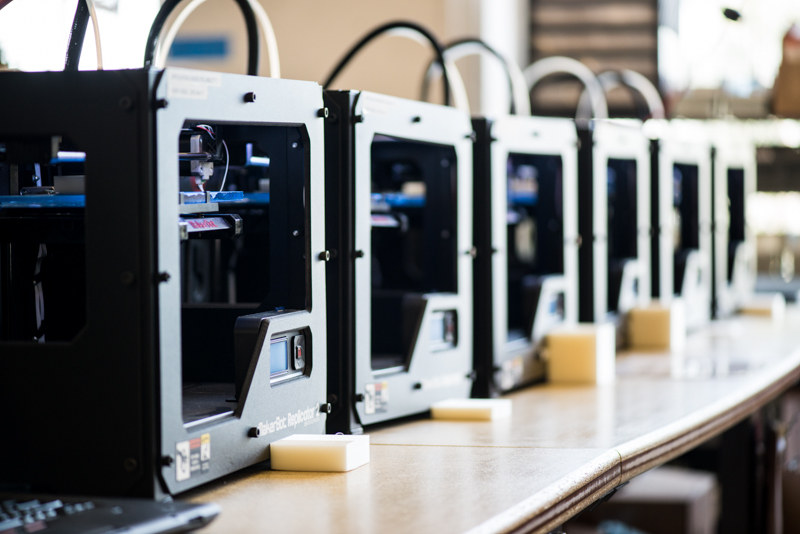Can a 3D printer print a 3D printer?


A starfish can reproduce without a partner. The creature loses an arm, and before you know it, you have another starfish. Think of the potential for the species to take over the world, if enough of them were willing to make that initial sacrifice of a limb.
Are 3D printers the starfish of the technology world? That is, can a 3D printer print a 3D printer? And if so, do we need to fear a runaway scenario? An attack of the killer 3D printers, if you will.
I did a little research (emphasis on word little) this morning, to see if I could find any examples of such self-replication; of an incipient master race of mechanical self-maters.
Nothing. Phew!
But surely, it must be happening. The hype of 3D printing has the things making just about everything else. We've all heard about the gun they can fabricate. And according to AskMen's highly entertaining but somewhat questionable 3D Printers: 50 Things You Can Make, they can churn out meat, stem cells, jawbones, camera lenses, dishwasher parts, guitars, houses and even a Stradivarius violin.
So I return to my question. Can a 3D printer print a 3D printer? And what if one of these contraptions also started spawning not only more of itself, but starfish as well?
I'm frightened. I think I'm going to print a spaceship and flee to Mars. It might be a bleak existence - there's no Twitter there that I know of. But at least there won't be any 3D printers either. Not yet, anyway.
Photo of MakerBot 3D printers is from Louis Seigal via MakerBot
Writer's note: Not all starfish have this ability, and not all 3D printers are evil-minded.
How to get to Mars:
SmartPlanet has written a lot about 3D printers. Click here for an archive. A few of our most recent:
- A 3D scanner for iPad
- Here's the world's first 3D copy machine
- An affordable 3D printer that makes larger objects
- 5 Reasons why Wall Street should be bullish on 3D printing
- And now, a 3D scanner
This post was originally published on Smartplanet.com